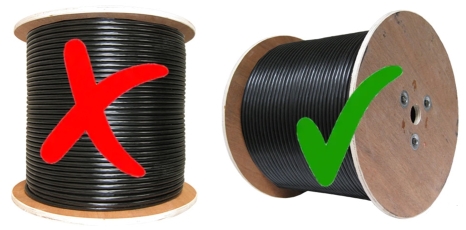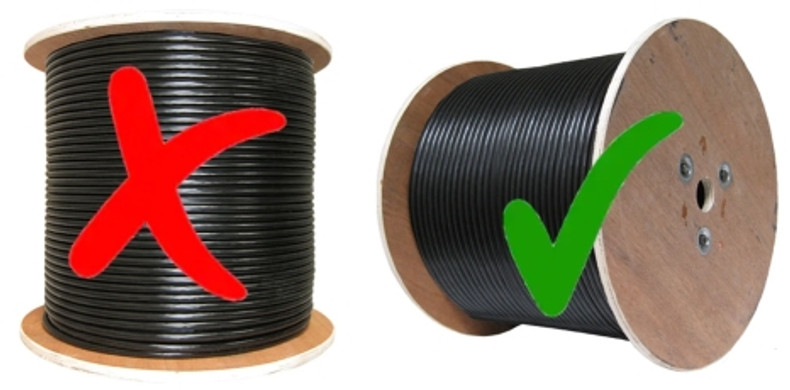
Did you know that cable drums of RF feeder coaxial cable should be stored and transported on their edge (i.e. upright) and not lying flat?
RF coax is sensitive to physical damage during transportation, storage and installation. Proper handling is necessary to maintain performance of these cables, hence it is essential to understand the right way to handle and install RF cables.
Any physical damage will cause degradation to the electrical properties of RF coaxial cables, which will be found during the commissioning and measurement verification after installation. If any physical damage is found on the cable during the installation, the cable should be swapped out or at least checked to ensure that it still meets specification.
Storage and Transportation
- The cable drums can be stored outdoors or indoors, however indoor storage is always preferred.
- Cable ends must be sealed water tight by heat shrinkable end caps or equivalent at all times during storage and transportation to prevent moisture ingress into the cable.
- Partially used cable drums must have the cable end securely tied.
- During long storage periods,storage conditions like ventilation,room temperature and humidity should be considered.
- The circular cable drum rolls easily. Make sure to use wedges to prevent drums from rolling during storage.
- Stacking of drums should be avoided.
- Lifting the drum with a shaft through the center of the drum and a spreader or fork-lift is the preferred method. Be careful not to damage the sides of the drum as damaged drum sides may damage the cable when unspooling.
- Always roll the drum in the direction of the arrow on the flange to avoid loosening the cable on the drum. Loose cables are easily damaged.
Installation
General
The cable should be marked for identification and unwound from the drum by slowly and steadily rotating the drum and pulling the cable along the cable route. If the cable jacket is damaged, the cable shall be replaced or immediately verified by impedance testing.
Minimum Bending Radius
There are usually two different values for minimum bending radius; single and repeated. Repeated bending radius is the limit during the installation (hauling) and single bending radius means the final bending in installation. It is very important to not exceed these values to avoid damaging the cable and it’s electrical performance.
Maximum Pulling Force (Tensile strength)
The maximum pulling force is determined by the construction of the cable and is specified by the manufacturer.
The tensile stress of the cable shall be limited to the maximum pulling force according to the cable’s specification.
Crush Resistance (Flat plate crush strength)
Any impacts and compression that may cause permanent changes to the cable construction are forbidden. Dents and depressions cause signal reflection, attenuation and degradation.
Connectors
Use only approved connectors and always follow the manufacturer’s installation instructions carefully.
Cable should have 100 mm of straight section before any connector. Bends must not start immediately adjacent to a connector.
All connectors must be tightened with a torque wrench.
Protect the connector with appropriate waterproof taping.
All blogs are copyrighted. No re-posting, plagiarising or other forms of flattery is permitted.

